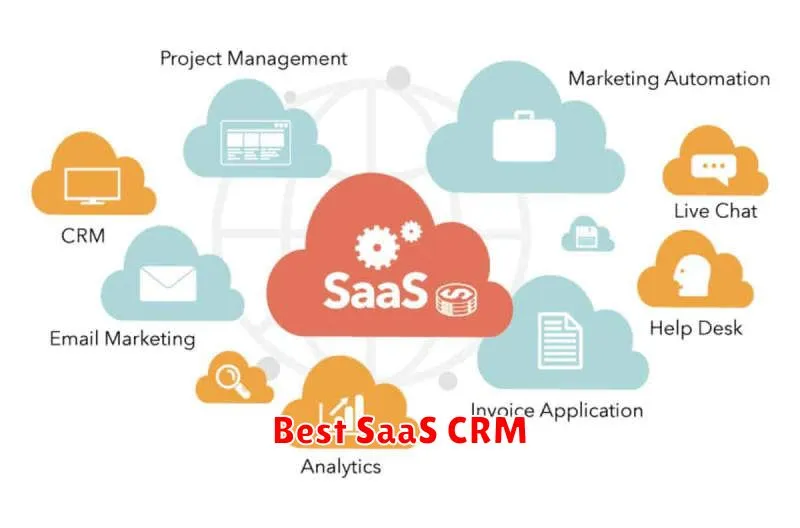Choosing the right CRM can make or break your SaaS business. With so many options available, it can be overwhelming to find the perfect fit for your needs. In 2024, you need a CRM that helps you manage customer relationships, streamline sales processes, and drive revenue growth. This article will explore the key features to consider when selecting a CRM and highlight the top CRM for SaaS companies in 2024.
The Importance of a SaaS-Specific CRM
In today’s digital age, businesses of all sizes are increasingly relying on Software as a Service (SaaS) solutions to streamline their operations and enhance their customer experience. With the proliferation of SaaS applications, it’s crucial for businesses to have a CRM (Customer Relationship Management) system that is specifically designed to handle the unique needs of a SaaS environment.
Challenges of Traditional CRM for SaaS Businesses
Traditional CRM systems often struggle to effectively manage the complexities of SaaS businesses. Some of the key challenges include:
- Subscription Management: SaaS businesses need to track subscriptions, renewal dates, and customer churn. Traditional CRMs may not have the necessary features to manage these aspects efficiently.
- Usage Data Tracking: SaaS applications generate a vast amount of usage data that provides valuable insights into customer behavior and product adoption. Traditional CRMs may not be equipped to handle this data effectively.
- Integration with Other SaaS Tools: SaaS businesses often use a multitude of different applications. A CRM system needs to seamlessly integrate with these tools to ensure data consistency and efficiency.
Benefits of a SaaS-Specific CRM
A CRM system designed specifically for SaaS businesses addresses these challenges and offers numerous benefits:
- Improved Subscription Management: SaaS-specific CRMs provide comprehensive tools for managing subscriptions, automating renewal processes, and tracking customer churn.
- Enhanced Usage Data Analysis: These CRMs offer robust analytics capabilities that allow businesses to gain insights into customer usage patterns, product performance, and areas for improvement.
- Seamless Integrations: SaaS-specific CRMs are designed to integrate seamlessly with other popular SaaS applications, such as marketing automation platforms, email marketing tools, and payment gateways.
- Improved Customer Experience: By providing a unified view of customer data and streamlining interactions, SaaS-specific CRMs can significantly enhance the customer experience.
Choosing the Right SaaS-Specific CRM
When selecting a SaaS-specific CRM, consider factors such as:
- Features and Functionality: Ensure the CRM offers the specific features you need for managing subscriptions, tracking usage data, and integrating with other tools.
- Scalability: Choose a CRM that can scale with your business as it grows.
- Pricing and Support: Consider the pricing model and the level of support offered by the CRM provider.
Investing in a SaaS-specific CRM can be a game-changer for your business. By embracing a CRM solution tailored to your unique needs, you can gain a competitive edge, improve customer satisfaction, and drive sustainable growth.
Integration with Key SaaS Tools

Our platform seamlessly integrates with a wide range of popular SaaS tools, empowering you to streamline your workflows and maximize efficiency. We understand the importance of connecting your existing systems, eliminating the need for manual data entry and ensuring a unified data ecosystem.
Here are some of the key SaaS tools we integrate with:
- CRM Platforms: Salesforce, HubSpot, Pipedrive, Zoho CRM
- Project Management Tools: Asana, Trello, Jira, Monday.com
- Marketing Automation Tools: Mailchimp, Marketo, Pardot, ActiveCampaign
- Communication and Collaboration Tools: Slack, Microsoft Teams, Google Workspace
- Analytics and Reporting Tools: Google Analytics, Tableau, Power BI
These integrations provide a robust set of capabilities, allowing you to:
- Sync data between different systems for a centralized view of your operations.
- Automate workflows to save time and reduce manual errors.
- Gain deeper insights by analyzing data across multiple platforms.
- Improve collaboration by sharing information seamlessly.
By leveraging these integrations, you can unlock the full potential of your SaaS tools and optimize your business processes. We are constantly expanding our integration capabilities, ensuring that our platform remains compatible with the latest and greatest SaaS solutions.
Subscription Management Features
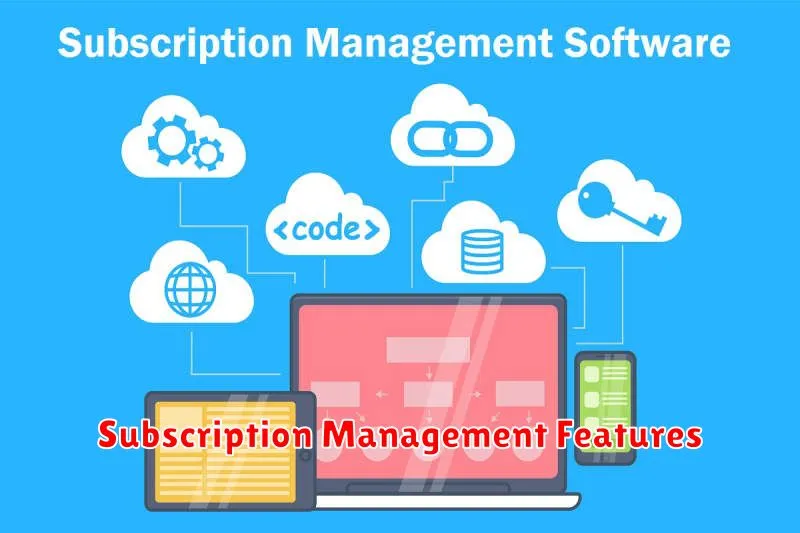
Subscription management is a critical aspect of any business that relies on recurring revenue. It allows businesses to track and manage customer subscriptions, automate billing and payment processes, and provide excellent customer service. Here are some key features of effective subscription management systems:
Customer Lifecycle Management
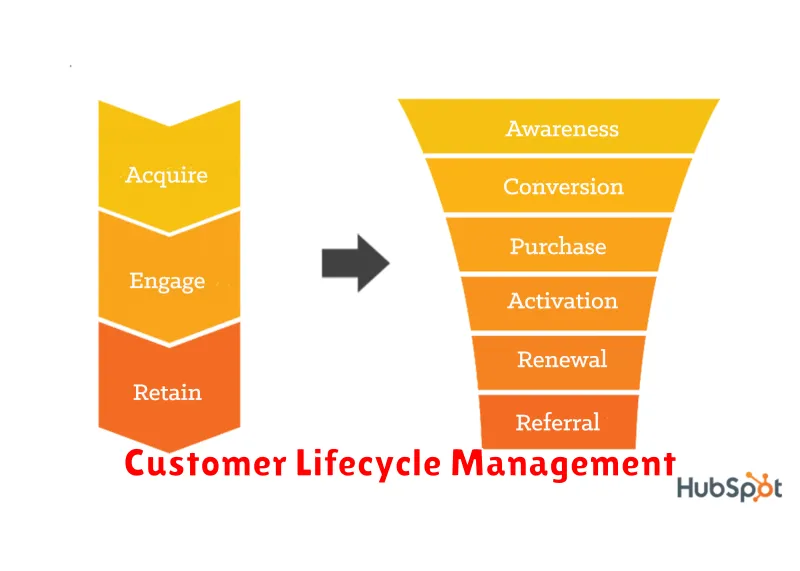
Customer lifecycle management (CLM) is a strategy that focuses on optimizing the customer experience across every stage of their journey with your business. This journey includes everything from the initial awareness stage to the eventual loyalty stage, and everything in between. It’s a holistic approach that takes into account the various touchpoints a customer has with your brand, and aims to ensure that each interaction is positive, memorable, and contributes to their overall satisfaction.
The key objective of CLM is to build long-lasting customer relationships by fostering loyalty and advocacy. By understanding customer needs and preferences at each stage of their journey, businesses can tailor their interactions, marketing efforts, and offerings to deliver personalized and relevant experiences. This not only enhances customer satisfaction but also drives key business outcomes like increased customer retention, improved customer lifetime value, and higher revenue.
The Stages of the Customer Lifecycle
The customer lifecycle can be broadly divided into several key stages, each representing a distinct phase in a customer’s journey. These stages are:
- Awareness: This is the initial stage where potential customers become aware of your brand and its offerings. It might be through advertising, word-of-mouth, online research, or other channels.
- Consideration: In this stage, potential customers actively research and evaluate different solutions to address their needs. They compare your products or services with those of your competitors.
- Decision: This stage involves the customer making a purchase decision based on their evaluation and often influenced by factors like pricing, product features, and brand reputation.
- Onboarding: Once a customer has purchased, the onboarding process helps them get acquainted with your product or service. This can include training materials, tutorials, or support services.
- Retention: This is the crucial stage where businesses aim to retain existing customers by providing excellent support, personalized experiences, and ongoing value. Loyalty programs and exclusive offers can play a significant role here.
- Advocacy: When customers are highly satisfied, they often become advocates for your brand. They share their positive experiences with others, influencing potential new customers.
Benefits of Customer Lifecycle Management
Implementing a successful CLM strategy offers a wide range of benefits for businesses, including:
- Increased Customer Retention: By understanding and addressing customer needs, businesses can build stronger relationships and reduce churn rates.
- Higher Customer Lifetime Value (CLTV): By providing consistent value and engaging customers throughout their journey, businesses can increase the revenue they generate from each customer over time.
- Improved Customer Satisfaction: Tailored experiences and personalized interactions lead to greater customer satisfaction and positive brand perception.
- Enhanced Brand Advocacy: Loyal and satisfied customers are more likely to become brand advocates, spreading positive word-of-mouth and attracting new customers.
- Data-Driven Decision Making: By collecting and analyzing data about customer behavior, businesses can gain valuable insights to optimize their strategies and offerings.
Key Strategies for Effective Customer Lifecycle Management
To effectively manage the customer lifecycle, businesses can adopt a variety of strategies, including:
- Personalization: Delivering personalized experiences that cater to individual customer needs and preferences is crucial for enhancing engagement and satisfaction.
- Segmentation: Grouping customers based on shared characteristics allows businesses to tailor their marketing and communication efforts to specific segments.
- Customer Relationship Management (CRM): Implementing a CRM system helps businesses manage customer interactions, track their journey, and gather valuable data.
- Customer Feedback: Gathering feedback through surveys, reviews, and interactions allows businesses to understand customer pain points and areas for improvement.
- Customer Success: Providing proactive support, resources, and guidance to help customers achieve their goals builds strong relationships and increases loyalty.
By focusing on CLM, businesses can cultivate long-lasting customer relationships, drive sustainable growth, and gain a competitive advantage in today’s dynamic marketplace.
Sales and Marketing Automation for SaaS
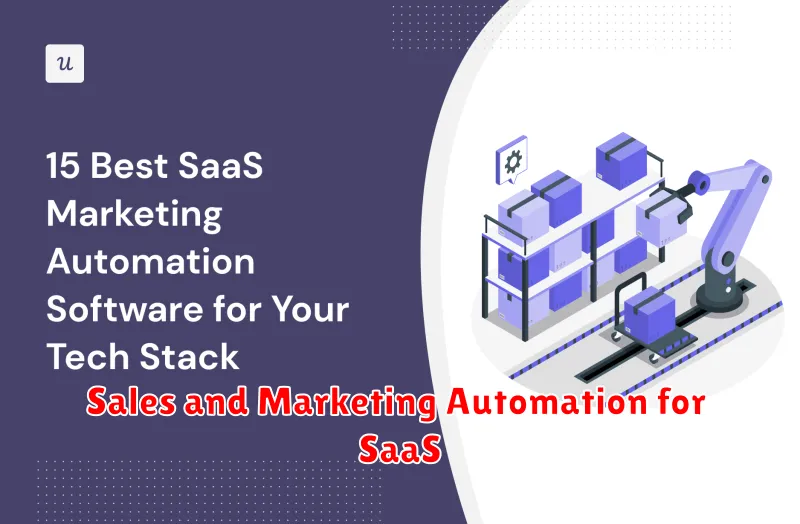
In today’s fast-paced digital world, it’s crucial for SaaS businesses to have efficient systems in place to manage their sales and marketing efforts. This is where sales and marketing automation comes in. By automating repetitive tasks and processes, SaaS businesses can free up time for more strategic initiatives, improve efficiency, and ultimately drive growth.
Benefits of Sales and Marketing Automation for SaaS
There are numerous benefits to implementing sales and marketing automation in a SaaS business. These include:
- Increased efficiency: Automating tasks like email marketing, lead nurturing, and social media posting frees up time for your team to focus on higher-value activities.
- Improved lead generation: Automation tools can help you identify and qualify leads more effectively, leading to a higher volume of qualified leads.
- Enhanced customer engagement: Automated email sequences and personalized content can help nurture leads and keep them engaged throughout the sales cycle.
- Better data analysis: Automation tools provide detailed data and insights into your sales and marketing performance, allowing you to optimize your strategies.
- Reduced costs: By automating tasks, you can reduce the need for manual labor, saving time and money.
Key Features of Sales and Marketing Automation Tools
Sales and marketing automation tools offer a wide range of features to help SaaS businesses streamline their operations. Some key features include:
- Email marketing: Create and send personalized email campaigns to nurture leads and drive conversions.
- Lead scoring and qualification: Automatically assess the quality of leads based on their behavior and engagement.
- Marketing automation: Schedule and automate tasks like social media posting, content publishing, and lead nurturing.
- Sales automation: Automate sales processes such as lead assignment, follow-ups, and opportunity management.
- CRM integration: Connect your automation tool with your CRM system to centralize customer data and insights.
- Reporting and analytics: Gain valuable insights into your sales and marketing performance with detailed reports and dashboards.
Choosing the Right Sales and Marketing Automation Tool
With so many different tools available, it’s important to choose one that meets the specific needs of your SaaS business. Consider factors such as:
- Your budget: Different tools have varying pricing plans.
- Your team’s technical skills: Choose a tool that is user-friendly and easy to learn.
- The features you need: Make sure the tool offers the specific features that will help you achieve your goals.
- Integration capabilities: Ensure the tool integrates with your existing systems.
Conclusion
Sales and marketing automation is essential for SaaS businesses looking to scale their operations and drive growth. By automating repetitive tasks and processes, you can free up time for more strategic initiatives, improve efficiency, and enhance customer engagement. With the right tool and implementation strategy, sales and marketing automation can be a powerful asset for your SaaS business.
Analytics and Reporting for SaaS Metrics
In the dynamic landscape of Software as a Service (SaaS), accurate and insightful analytics are paramount for success. SaaS metrics provide valuable data points that inform strategic decision-making, optimize operations, and drive growth. This article delves into the crucial aspects of analytics and reporting for SaaS metrics, equipping you with the knowledge to harness the power of data.
Key SaaS Metrics to Track
The selection of relevant SaaS metrics is pivotal. Here are some essential metrics to monitor:
- Monthly Recurring Revenue (MRR): The recurring revenue generated each month. It’s a core indicator of overall business health.
- Customer Acquisition Cost (CAC): The average cost of acquiring a new customer. Understanding CAC is crucial for optimizing marketing spend.
- Customer Lifetime Value (CLTV): The total revenue a customer generates over their lifetime. A high CLTV indicates customer loyalty and satisfaction.
- Churn Rate: The percentage of customers who stop using your service within a given period. Lower churn rate indicates customer retention.
- Active Users: The number of users actively engaging with your service. This metric reflects engagement and product usage.
Building Effective Analytics and Reporting
A robust analytics framework is essential for extracting meaningful insights from your SaaS metrics. Key steps include:
- Data Collection and Integration: Establish a comprehensive data collection system that captures all relevant SaaS metrics from various sources.
- Data Visualization and Reporting: Leverage data visualization tools to create interactive dashboards and reports that present complex data in a clear and concise manner.
- Segmentation and Filtering: Segment your data by key factors such as customer demographics, subscription plans, and product usage to gain deeper insights.
- Performance Benchmarking: Compare your SaaS metrics against industry benchmarks and competitors to identify areas for improvement.
- Regular Analysis and Reporting: Establish a regular schedule for analyzing your SaaS metrics and generating reports to track performance trends and make informed decisions.
Tools and Technologies for SaaS Analytics
A variety of tools and technologies can aid in your SaaS analytics efforts. Some popular options include:
- Google Analytics: A powerful platform for website and user behavior analysis.
- Mixpanel: A versatile tool for user engagement and product analytics.
- Tableau: A leading data visualization platform for creating interactive dashboards and reports.
- Power BI: Microsoft’s business intelligence tool for data analysis and reporting.
- Salesforce: A comprehensive CRM platform with robust analytics capabilities.
Benefits of Strong SaaS Analytics
Implementing effective analytics and reporting for SaaS metrics yields numerous benefits, including:
- Data-Driven Decision Making: Informed decisions based on real-time data enhance business strategy and operational efficiency.
- Improved Customer Acquisition and Retention: Understanding customer behavior and preferences leads to targeted marketing efforts and better customer service.
- Product Optimization: Analyzing user engagement and product usage identifies areas for improvement and feature development.
- Increased Revenue Growth: Optimizing key SaaS metrics drives revenue growth and profitability.
- Competitive Advantage: Data-driven insights provide a competitive edge by enabling faster response to market trends and customer needs.
In conclusion, analytics and reporting are essential for navigating the dynamic world of SaaS. By tracking key metrics, establishing a robust analytics framework, and leveraging appropriate tools and technologies, SaaS businesses can unlock data-driven insights that propel growth, optimize operations, and achieve sustainable success.
Scalability and Affordability
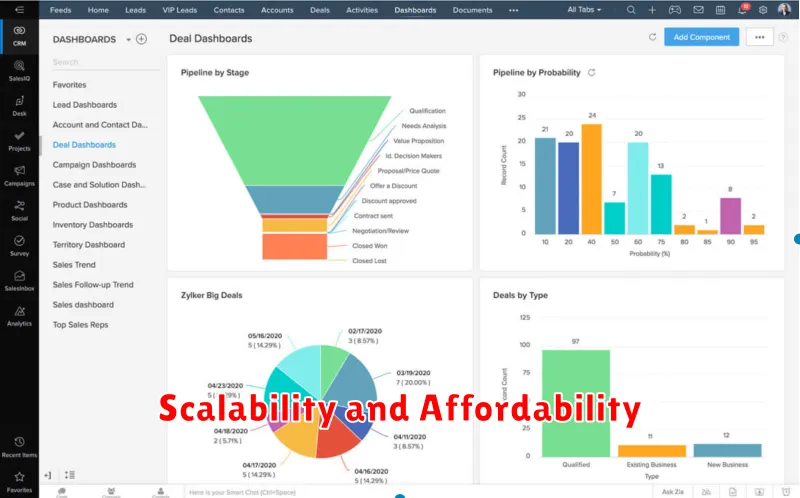
In the dynamic world of technology, businesses are constantly seeking solutions that balance scalability and affordability. While both factors are crucial for sustainable growth, finding the sweet spot can be a challenge. Scalability refers to a system’s ability to handle increasing workloads and user demands without compromising performance. On the other hand, affordability ensures that the solution remains financially viable for the business.
Traditionally, businesses have faced a trade-off between these two aspects. Scalable solutions often come with hefty price tags, making them inaccessible to smaller companies. Conversely, affordable solutions may lack the capacity to accommodate future growth. However, recent advancements in technology have blurred the lines between scalability and affordability, offering businesses innovative ways to achieve both.
Cloud computing has emerged as a game-changer in this regard. By leveraging cloud infrastructure, businesses can access scalable resources on demand, paying only for what they use. This pay-as-you-go model eliminates the need for significant upfront investments, making cloud computing an affordable option for businesses of all sizes.
Furthermore, open-source software has democratized access to powerful technologies. Open-source solutions are free to use and modify, offering cost-effective alternatives to proprietary software. The collaborative nature of open-source development also ensures continuous improvement and scalability.
Balancing scalability and affordability is an ongoing challenge, but businesses can leverage innovative technologies such as cloud computing and open-source software to navigate this complex landscape. By embracing these advancements, businesses can unlock their full potential and achieve sustainable growth without compromising on either scalability or affordability.
User-Friendliness and Adoption Rates
User-friendliness is a crucial factor in determining the success of any technology, particularly in today’s competitive landscape. A user-friendly product or service is one that is easy to learn, understand, and use, even for individuals with limited technical expertise. The concept of user-friendliness extends beyond mere aesthetics and encompasses aspects such as intuitive navigation, clear instructions, and accessibility for all users.
The relationship between user-friendliness and adoption rates is undeniable. When a product or service is user-friendly, it is more likely to be adopted by a wider range of users, including those who might otherwise be hesitant due to perceived complexity. Conversely, a complex or difficult-to-use product or service is likely to face challenges in gaining widespread adoption. Users are more inclined to embrace technologies that simplify their lives and offer a seamless user experience.
Several factors contribute to the user-friendliness of a product or service. These include:
- Intuitive Design: A well-designed interface that is easy to navigate and understand.
- Clear Instructions: Comprehensive and easily digestible instructions that guide users through the product or service.
- Accessibility: Features that cater to users with disabilities, such as screen readers and keyboard navigation.
- Responsive Support: Prompt and helpful support services that address user inquiries and resolve issues.
In conclusion, user-friendliness plays a pivotal role in driving adoption rates. By prioritizing user experience and creating products and services that are easy to learn, understand, and use, businesses can increase their chances of success in the marketplace. Embracing user-centered design principles and implementing best practices for accessibility will lead to a more engaged and satisfied user base, ultimately contributing to higher adoption rates and long-term growth.
Top CRM Options for SaaS Companies in 2024
In the dynamic world of SaaS, a robust CRM system is not just a luxury, but a necessity for growth and success. It empowers businesses to manage customer relationships effectively, optimize sales funnels, and ultimately, drive revenue. With a plethora of CRM options available, choosing the right one for your SaaS company can be a daunting task. To guide you through this decision, we’ve curated a list of the top CRM options for SaaS companies in 2024, highlighting their key strengths and considerations.
1. Salesforce
Salesforce, a leading CRM platform, offers a comprehensive suite of tools for managing customer interactions, sales pipelines, marketing campaigns, and customer service. Its vast ecosystem of integrations, customization options, and robust analytics make it a popular choice for SaaS companies of all sizes.
- Strengths: Industry-leading features, extensive app marketplace, strong security, and excellent customer support.
- Considerations: Can be expensive for smaller businesses, complex setup and configuration, and may require technical expertise.
2. HubSpot
HubSpot, a popular all-in-one marketing and sales platform, provides a powerful CRM solution specifically designed for SaaS businesses. Its user-friendly interface, built-in marketing automation, and seamless integration with other HubSpot tools make it a strong contender for SaaS companies seeking a comprehensive platform.
- Strengths: Easy-to-use interface, affordable pricing plans, effective marketing automation, and strong customer support.
- Considerations: Limited customization options compared to Salesforce, may not be suitable for companies with highly complex sales processes.
3. Zoho CRM
Zoho CRM, a comprehensive and affordable CRM solution, offers a wide range of features for managing leads, contacts, deals, and customer service. Its intuitive interface, extensive integrations, and customizable workflows make it a great option for SaaS companies seeking a flexible and feature-rich platform.
- Strengths: Affordable pricing, extensive features, customizable workflows, and excellent integration options.
- Considerations: May not be as feature-rich as Salesforce, can be overwhelming for new users, and may require some technical expertise for setup and customization.
4. Pipedrive
Pipedrive, a sales-focused CRM solution, excels at simplifying and automating sales processes. Its intuitive visual pipeline, powerful reporting tools, and mobile-friendly interface make it ideal for SaaS companies focused on driving sales efficiency.
- Strengths: User-friendly interface, excellent pipeline visualization, strong sales automation features, and mobile accessibility.
- Considerations: Limited marketing automation capabilities, may not be suitable for companies with complex customer service needs.
5. Close.io
Close.io, a sales-centric CRM platform, prioritizes sales engagement and communication. Its robust calling and emailing features, seamless integration with popular tools, and customizable workflows make it a valuable option for SaaS companies seeking a sales-focused solution.
- Strengths: Excellent communication features, strong sales automation, powerful reporting tools, and user-friendly interface.
- Considerations: Limited marketing automation capabilities, may not be suitable for companies with complex customer service requirements.
6. Freshworks CRM
Freshworks CRM, a user-friendly and affordable solution, provides a comprehensive suite of tools for managing customer interactions, sales pipelines, and customer service. Its intuitive interface, excellent customer support, and strong mobile app make it a great option for SaaS companies seeking a user-friendly and affordable platform.
- Strengths: Affordable pricing, user-friendly interface, excellent customer support, and strong mobile app.
- Considerations: May not be as feature-rich as Salesforce, limited customization options, and may not be suitable for companies with highly complex sales processes.
7. Microsoft Dynamics 365
Microsoft Dynamics 365, a comprehensive CRM solution, offers a wide range of features for managing customer interactions, sales pipelines, marketing campaigns, and customer service. Its strong integration with Microsoft Office 365, robust analytics, and customizable workflows make it a suitable choice for SaaS companies seeking a platform with deep integration capabilities.
- Strengths: Strong integration with Microsoft Office 365, robust analytics, customizable workflows, and comprehensive features.
- Considerations: Can be expensive for smaller businesses, complex setup and configuration, and may require technical expertise.
8. ActiveCampaign
ActiveCampaign, a marketing automation platform, offers a built-in CRM solution that excels at managing customer interactions, nurturing leads, and automating marketing tasks. Its user-friendly interface, robust automation features, and comprehensive reporting tools make it an excellent choice for SaaS companies seeking a powerful marketing automation solution.
- Strengths: User-friendly interface, robust automation features, excellent reporting tools, and strong integration capabilities.
- Considerations: Limited sales features compared to dedicated CRM platforms, may not be suitable for companies with complex sales processes.
Conclusion
The right CRM for your SaaS company depends on your specific needs, budget, and business goals. By carefully considering the features, pricing, and user experience of each option, you can choose the CRM that best empowers your team to manage customer relationships effectively, drive revenue, and achieve sustainable growth.
Making the Right Choice for Your Business
In the dynamic landscape of business, making the right choices is paramount to success. From strategic decisions to operational processes, each choice has the potential to shape the future of your enterprise. However, with numerous options and evolving market trends, navigating the decision-making process can be overwhelming. This article will delve into key considerations and practical tips to empower you to make informed and effective choices for your business.
Understanding Your Goals and Values
Before embarking on any decision-making journey, it’s crucial to have a clear understanding of your business goals and values. What are you striving to achieve? What principles will guide your actions? Defining these fundamental aspects provides a compass for your choices, ensuring they align with your overarching vision. For example, if sustainability is a core value, your decisions should reflect this commitment.
Analyzing the Situation
Once you have a firm grasp of your goals and values, the next step is to meticulously analyze the situation at hand. Gather relevant data, conduct thorough research, and consult with key stakeholders to gain a comprehensive perspective. This analysis will reveal potential risks, opportunities, and the impact of different choices. Data-driven insights will empower you to make informed decisions.
Considering Alternatives
Avoid limiting yourself to a single option. Explore various alternatives and weigh their pros and cons. Brainstorming sessions, creative problem-solving techniques, and market research can help you identify innovative solutions. Don’t be afraid to challenge conventional wisdom and consider unconventional approaches that may lead to breakthroughs.
Evaluating the Impact
Each choice you make will have consequences. It’s essential to assess the potential impact on your business, employees, customers, and stakeholders. Consider both short-term and long-term effects, including financial implications, operational efficiency, and brand reputation. A comprehensive impact evaluation will help you anticipate challenges and mitigate potential risks.
Seeking Expert Guidance
Don’t hesitate to leverage the expertise of others. Consult with industry professionals, mentors, and advisors who have experience in similar situations. Their insights and perspectives can provide valuable guidance and help you navigate complex decisions. A fresh perspective can often shed light on overlooked aspects or identify alternative solutions.
Trusting Your Instincts
While data and analysis are invaluable, don’t underestimate the power of your gut feeling. Sometimes, your intuition can provide valuable insights that are difficult to quantify. However, it’s important to balance your instincts with sound reasoning and careful consideration of the facts.
Embracing Flexibility
The business world is constantly evolving, and what works today may not be effective tomorrow. Embrace flexibility and be prepared to adapt your decisions as new information emerges or circumstances change. Continuous monitoring and evaluation will enable you to adjust course as needed.
Conclusion
Making the right choices for your business is a journey that requires careful planning, thorough analysis, and a commitment to continuous learning. By understanding your goals and values, analyzing the situation, considering alternatives, evaluating the impact, seeking expert guidance, trusting your instincts, and embracing flexibility, you can equip yourself to make informed and effective decisions that drive your business toward success.
